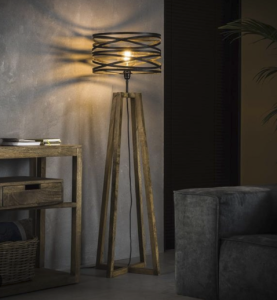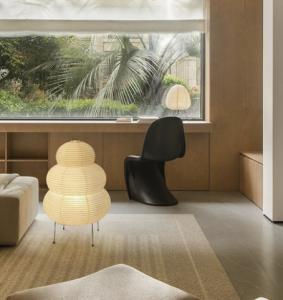Rural style, often referred to as country or farmhouse style, is a design aesthetic that draws inspiration from the simplicity and charm of rural living. This style is characterized by its warm, inviting atmosphere, which evokes a sense of nostalgia and comfort. It often features a palette of earthy tones, natural materials, and rustic finishes that reflect the beauty of the countryside.
The essence of rural style lies in its ability to create spaces that feel lived-in and welcoming, where every piece of furniture and decor tells a story. This aesthetic is not just about visual appeal; it embodies a lifestyle that values connection to nature, community, and tradition. At its core, rural style emphasizes authenticity and craftsmanship.
Many elements are handcrafted or sourced from local artisans, which adds a unique touch to each space. The use of reclaimed wood, vintage textiles, and handmade pottery are common in rural design, as they contribute to a sense of history and character. Additionally, this style often incorporates practical elements that reflect the functionality of rural life.
For instance, open shelving in kitchens allows for easy access to everyday items while showcasing beautiful dishware. Overall, understanding rural style involves appreciating its roots in simplicity, sustainability, and a deep connection to the environment.
Incorporating Natural Elements
Incorporating natural elements into rural design is essential for creating an authentic and harmonious space. This can be achieved through the use of materials such as wood, stone, and metal, which not only add texture but also evoke the feeling of being surrounded by nature. Wooden beams, for example, can serve as striking architectural features that enhance the rustic charm of a room.
Similarly, stone accents—whether in the form of a fireplace or a feature wall—bring an organic quality that grounds the space and connects it to the earth. By using these materials thoughtfully, one can create an environment that feels both timeless and inviting. Beyond structural elements, incorporating greenery is another vital aspect of embracing natural elements in rural design.
Houseplants, herbs, and even small trees can breathe life into a space while improving air quality and adding color. Window sills adorned with potted plants or hanging planters can create a seamless transition between indoor and outdoor spaces. Additionally, using natural fabrics such as linen, cotton, or wool for upholstery and curtains can further enhance the organic feel of a room.
These choices not only contribute to the aesthetic but also promote a sense of well-being by fostering a connection to nature within the home.
Choosing the Right Ceiling Lamps
Selecting the right ceiling lamps Westovo is crucial in achieving the desired ambiance in a rural-style home. Lighting plays a significant role in setting the mood and enhancing the overall aesthetic of a space. In rural design, ceiling lamps often feature rustic materials such as wrought iron or aged brass, which complement the natural elements found throughout the home.
Pendant lights with a vintage flair or chandeliers made from reclaimed wood can serve as stunning focal points that draw the eye upward while providing ample illumination. The key is to choose fixtures that resonate with the overall theme while also offering functionality. Moreover, it’s essential to consider the type of lighting that best suits each room’s purpose.
For instance, in a kitchen or dining area, brighter lighting may be necessary for tasks such as cooking or reading recipes. In contrast, softer lighting in living rooms or bedrooms can create a cozy atmosphere conducive to relaxation. Dimmers can be an excellent addition to ceiling lamps, allowing homeowners to adjust the brightness according to their needs and preferences.
By thoughtfully selecting ceiling lamps that align with both style and function, one can enhance the rural aesthetic while ensuring that each space remains practical and inviting.
Creating a Harmonious Atmosphere
Creating a harmonious atmosphere in a rural-style home involves careful consideration of color schemes, textures, and furnishings. A cohesive color palette typically consists of soft neutrals combined with earthy tones like greens, browns, and muted blues. These colors evoke the tranquility of nature and promote a sense of calm throughout the home.
When selecting paint colors or wallpaper patterns, it’s beneficial to choose options that reflect the surrounding landscape or local flora. This connection to nature not only enhances the aesthetic but also fosters a sense of peace and well-being. In addition to color, layering textures is vital for achieving harmony in rural design.
Mixing materials such as wood, stone, metal, and textiles creates visual interest while maintaining an organic feel. For example, pairing a rough-hewn wooden table with soft linen tablecloths and woven baskets can create an inviting dining area that feels both stylish and comfortable. Furthermore, incorporating various patterns—such as floral prints on cushions or plaid throws—can add depth without overwhelming the space.
By thoughtfully curating these elements, one can create an atmosphere that feels balanced and cohesive, inviting residents and guests alike to relax and enjoy their surroundings.
Embracing Simplicity and Functionality
Embracing simplicity and functionality is at the heart of rural design philosophy. This approach prioritizes practicality without sacrificing style, resulting in spaces that are both beautiful and livable. In rural homes, furniture is often chosen for its utility as much as its aesthetic appeal.
Multi-functional pieces—such as storage ottomans or extendable dining tables—are particularly valuable in creating versatile spaces that can adapt to various needs. This focus on functionality ensures that every item serves a purpose while contributing to the overall design narrative. Moreover, simplicity in decor allows for a more relaxed atmosphere where clutter is minimized and essential items are highlighted.
Open floor plans are common in rural-style homes as they promote flow and connectivity between spaces. This layout encourages social interaction while making it easier to maintain an organized environment. Additionally, incorporating built-in storage solutions—like shelves or cabinets—can help keep everyday items out of sight while still being easily accessible.
By prioritizing simplicity and functionality in design choices, homeowners can create spaces that are not only aesthetically pleasing but also practical for everyday living.
Blending Traditional and Modern Designs
Blending traditional and modern designs is an effective way to create a unique rural aesthetic that honors heritage while embracing contemporary sensibilities. This fusion allows homeowners to celebrate their roots while incorporating modern conveniences and styles that enhance their living experience. For instance, pairing antique furniture pieces with sleek modern accents can create an intriguing contrast that adds depth to a room.
A vintage farmhouse table surrounded by minimalist chairs exemplifies how traditional elements can coexist harmoniously with modern design. Furthermore, this blending approach extends beyond furniture choices; it also encompasses architectural details and decor elements. Exposed beams or brick walls can be complemented by modern lighting fixtures or abstract artwork to create an engaging visual dialogue between old and new.
This juxtaposition not only adds character but also reflects the evolving nature of rural living in today’s world. By thoughtfully integrating traditional craftsmanship with contemporary design principles, homeowners can cultivate spaces that feel both timeless and relevant.
Enhancing the Space with Warm Lighting
Warm lighting is essential for enhancing the cozy atmosphere characteristic of rural-style homes. Unlike harsh fluorescent lights that can create an uninviting environment, warm lighting fosters intimacy and comfort. This type of lighting mimics the soft glow of candlelight or sunlight filtering through trees, making it ideal for creating inviting spaces where people want to gather and relax.
Incorporating warm-toned bulbs in ceiling fixtures, table lamps, and wall sconces can transform any room into a welcoming haven. In addition to choosing warm lighting fixtures, layering different light sources throughout a space is crucial for achieving depth and dimension. Combining ambient lighting with task lighting—such as under-cabinet lights in kitchens or reading lamps in living areas—ensures that each area serves its intended purpose while maintaining an overall warm glow.
Accent lighting can also be used to highlight artwork or architectural features, adding visual interest without overwhelming the space. By thoughtfully enhancing spaces with warm lighting options, homeowners can create an inviting atmosphere that encourages relaxation and connection.
Embracing the Beauty of Rural Living
Embracing the beauty of rural living goes beyond aesthetics; it encompasses a lifestyle rooted in appreciation for nature, community, and simplicity. Rural living often promotes slower-paced life rhythms that allow individuals to connect more deeply with their surroundings and loved ones. This connection is reflected in design choices that prioritize natural materials, handcrafted items, and sustainable practices—elements that celebrate local artisanship while minimizing environmental impact.
Moreover, embracing rural living means fostering a sense of community through shared spaces and experiences. Outdoor areas such as gardens or patios become extensions of the home where families gather for meals or celebrations amidst nature’s beauty. Incorporating elements like fire pits or outdoor seating encourages social interaction while allowing residents to enjoy their surroundings fully.
Ultimately, embracing the beauty of rural living involves creating spaces that reflect personal values while nurturing connections with nature and community—a true celebration of life’s simple pleasures.


